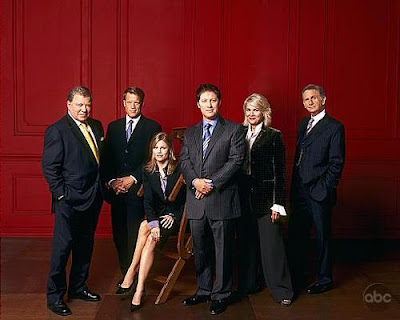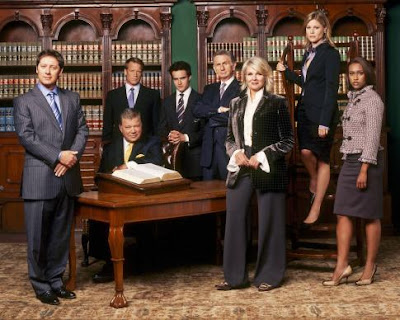t By Kathleen Murphy
Special to MSN Movies
Who doesn't want to play god? Maybe that's why the perils and pleasures of creating machines in our own image fuel so many sci-fi movie plotlines.
It's only human to dream of worry-free maid service and garbage collection, ambulatory weapons and ultrasmart computers, lover-'bots and supertoys -- a Stepford underclass obedient to our every whim and directive. And who wouldn't want to live forever, replacing worn-out organic parts with bionic spares, eventually downloading our memories into a brand-new and improved android body?
Too bad our machine-made paradise almost always short circuits. Electric sheep suddenly and inexplicably upgrade, growing human emotions and dreams of their own. What's more scary than android Adams and Eves who outstrip their creators in smarts, muscle, morals, even the capacity to love?
In "Westworld," "Star Wars," "The Terminator," "Hardware," "Eve of Destruction," "I, Robot," and "Transformers," malevolent Mechas attack humankind, out of simple revenge or the desire to be No. 1. Even Dr. Strangelove's bionic hand can't be trusted -- and beware of Kubrick's HAL, that paragon of artificial intelligence turned stone-cold killer in "2001"!
What do we do with machines that suddenly grow souls? How do we define human, if 'bots and 'droids perfectly mirror us? Think back to the Tin Man in "The Wizard of Oz," questing for a heart, or Data of "Star Trek: The Next Generation," nicknamed Pinocchio for his passionate wish to become "real."
Big Philosophical Questions aside, the movies teem with just plain lovable robots like Huey, Dewey and Louie ("Silent Running"), C-3PO and R2-D2 ("Star Wars"), and Robby the Robot ("Forbidden Planet"). And now Disney/Pixar powers up "WALL-E" (Waste Allocation Load Lifter, Earth-Class), the last, ultra-lonely robot stuck on Earth, after humans fled centuries ago. This animated adventure promises to warm the cockles of every heart -- or motherboard! To welcome "WALL-E," we activate 10 of his cinematic kin.
10. "Short Circuit" (1986)
A laser-armed robot gets juiced by a couple of big-time electrical surges during a thunderstorm, and upgrades to something like "human" on the spot. Number Five sports a kind of projector head with binocular eyes, a "torso" that rises out of a base propelled along by tank treads -- actually he looks a lot like WALL-E, the robot star of Disney's new animation. With his nasal computer voice, improbable chassis, and affection for John Wayne and the Three Stooges, this little machine is designed to charm -- and he totally upstages the rest of the (human) cast. Accidentally squashing a grasshopper, Number Five jacks into the possibility of his own death when he's told the bug can't be "reassembled." Nice moment comes when creator (Steve Guttenberg) and creation meet on a moonlit mountaintop to debate Number Five's status -- machine or something more -- and it all comes down to a robot cracking up at an old joke about a priest, a rabbi, a minister, and God.
9. "Making Mr. Right" (1987)
Red-haired kook Frankie Stone (Ann Magnuson) hires on to do PR for a corporation that's just produced Ulysses (a very funny John Malkovich), an android who looks exactly like his scientist-creator (also Malkovich) and turns out to possess far more human emotions than his maker. Skewering sexual contretemps and clichés for maximum laughs, "Making Mr. Right" targets the difficulty of finding and keeping a good man, so the sweet, sexy android -- a warmer, more human version of Gigolo Joe from "A.I." -- looks like Everywoman's fantasy of a boy toy. Built to spend long years in deep space sans loneliness, Ulysses unfortunately short-circuits into passionate love for Frankie. In a screwball switcheroo, the scientist who's "not very good with people" rides the rocket, while Ulysses hooks up with his lady love. "Nobody's perfect," the android lover quips, echoing the last hilarious words in "Some Like It Hot," as two gender-mismatched lovers (Jack Lemmon and Joe E. Brown) sail off into the sunset.
8. "Android" (1982)
Manning a deep-space lab, a prototypical nerd grooves on rock 'n' roll while fashioning a doll-sized metallic woman for her male counterpart to embrace, and checking out a sex-instruction program. Comes as no surprise that Max is less than human: smooth-skinned, helmeted with perfect hair, this skinny fellow's a tad edgy in his own skin, though he telegraphs very human horniness. Full of allusions to classic movies, "Android" mines major hilarity and horror out of the contrast between human savagery and Max's sweet dreams of getting to Earth -- off-limits following an awful outbreak of android murder and rape. Max's wide-eyed innocence can kill, but mostly it charms -- so that it's truly stomach-turning when the mad doctor (Klaus Kinski, a dead ringer for Rotwang of "Metropolis") pries open a panel in the back of our boy's skull to extract his "moral governor." Just-activated Cassandra saves the day, and she and Max head for Earth, his android ubermadchen hinting ominously of things to come: "We're not meant to be governed by the whims of men."
7. "RoboCop" (1987)
This rip-roaring actioner never wallows in the horror of reformatting a shot-up cop (Peter Weller) into an unstoppable cyborg -- "RoboCop" is all go! go! go! from start to finish.
His torso and limbs massively armored and weaponized, only the lower part of Murphy's sleekly helmeted face remains human -- but the way he twirls his huge sidearm like an old-time gunfighter is a dead giveaway. Even when his pre-death memories start flooding in, they're almost instantly converted into single-minded revenge that we wholeheartedly applaud, given the scarcely human slime that offed him. RoboCop's got a deliciously bent sense of humor: Programmed against attacking any employee of the corporation that built him, he snaps off a crisp "Thank you!" when the CEO cleverly fires the bad guy. A terrific ha-ha moment: The hulking ED-209 robot, hotly pursuing RoboCop, stops short at the top of a long flight of stairs, one "toe" of its huge tripartite foot delicately hazarding that first, fatal step.
6. "The Iron Giant" (1999)
A 100-foot-tall robot, with great round eyes, a steam-shovel jaw and a voracious appetite for scrap metal, lands smack-dab in the middle of the paranoid '50s, decade of Sputnik, the Red Scare and "duck and cover" cartoons. A bright, resourceful kid named Hogarth befriends the childlike monster and begins to "raise" him -- there's more than a hint here of Frankenstein's lightning-struck creation, as well as Spielberg's E.T. But it's a bad sign when the robot's eyes blaze angry-red at the sight of Hogarth's toy ray gun. And a deer killed by hunters gives the big lug his first painful lesson in mortality: "You die? I die?" "Giant" satirizes humankind's knee-jerk distrust of anything that's different, and celebrates the evolution of a machine of steel into Superman: The sweet-natured robot someone built to be a weapon of mass destruction makes a moral choice -- "I am not a gun!" -- and sacrifices himself to save Hogarth from nuclear annihilation.
5. "Battlestar Galactica" (TV series, 2004-2009)
In this universe-spanning sci-fi saga, androids called Cylons look like humankind's death knell. But these super-powerful immortals are mysteriously conflicted, perhaps driven by some larger imperative -- so that it's rarely certain whether they mean ultimate good or ill. And the fates of the human creators and their android offspring are intertwined: the birth of a baby to a Cylon mother and human father looms large -- and the recent news that two Cylons have a child coming signals that some kind of weird evolution is afoot, especially since the androids have lost the ability to endlessly resurrect. Most striking among the Cylon gynoids is Six (Tricia Helfer), usually blond, always graced with strikingly sculpted face and flawless body. Responsible for the destruction of humanity's home world, guardian spirit, shape-shifting lover of Galactica's second-in-command, star of a strange quasi-religious vision shared by human and Cylon alike, she's angel and succubus many times over.
4. "Alien" Trilogy (1979, 1986, 1992)
In "Alien," it's idiosyncratic, multihued human flesh that opposes the nothingness of deep space and the awful Otherness of the alien, a fanged, hooded, dragon-tailed shape-shifter with acid in its veins. Over and over, the striking clarity of Sigourney Weaver's features, the elegance and strength of her long-limbed warrior's body, defy the demonic perfection of the monster's inhuman physiology. Science Officer Ash (Ian Holm), a baby-faced android that bleeds white goo, worships the alien's purity, "unclouded by conscience, remorse, delusions of morality," characteristics the synthetic man clearly shares. The android in "Aliens" (Lance Henriksen) has the face of a medieval saint, starkly sculpted and somehow childlike, a faithful imitation of Ripley's humanity; aptly named, Bishop finds martyrdom, as he saves human mother and child. Only in "Alien 3" is Ripley's flesh breached by the alien, who impregnates her like some unholy ghost. When Bishop turns up, he looks like salvation to Ripley. But this Bishop, a human android-maker, parrots Ash: "Think of all we could learn from it ... you must let me have it!" Ripley chooses death, falling backward into a sea of fire.
3. "A.I.: Artificial Intelligence" (2001)
Drawing on "Wizard of Oz" and "Pinocchio," for starters, this darkly ferocious fairy tale follows the Dickensian pilgrimage of an android child hardwired to love without end. Watching David (Haley Joel Osment) imprint on his inconstant mommy, his generic android face instantaneously animated by genuine feelings, you're heart-struck by the terrible innocence and vulnerability the "real" woman has triggered for her emotional pleasure. Paradoxically, it's the artificial boy, not "superior" flesh-and-blood types, who loves most faithfully -- and a couple of thousand years later, organic, feeling humans exist only in David's long-lived Mecha memory. Emulating the most fundamental of religious impulses, David aches to be unique and loved, so he dreams up a Madonna who will make him so. Imagine that abandoned child worshipping his Blue Fairy for 2,000 years, deep in the frozen sea that covers Coney Island. We're talking love that passes (human) understanding.
2. "Blade Runner" (1982)
Here's a way to head off androids' evolving human emotions: Build in a fail-safe device that limits their lifespan to four years. (At least God gives us 70 or 80.) The fundamental riddle of "Blade Runner" is how to distinguish between real and fake humans -- especially when an android like the gorgeous Rachael (Sean Young) possesses a full set of memories and believes herself to be a natural woman. Roy Batty (Rutger Hauer) and his replicant tribe mostly treat people like expendable toys, but these superbly crafted creatures have the capacity to grieve for the wasteful demise of their own kind. Watch how tenderly Batty leans to kiss clown-faced Pris (Daryl Hannah), terminated by Deckard (Harrison Ford). Unable to win longer life from his corporate maker, this alien angel utters his own eloquent epitaph: "I've seen things you people wouldn't believe ... and all those moments will be lost in time like tears in rain ... time to die."
1. "Metropolis" (1927)
In Fritz Lang's dystopian masterpiece, a sweet-faced Madonna preaches peace to zombiefied workers, oppressed by an elite class. To head off revolution, mad scientist Rotwang animates a mechanical woman, clothing her austerely beautiful metal body in saintly Maria's human flesh. Her face twisted by dark delight, the false Maria writhes erotically on a nightclub stage, her gyrating loins and perfect breasts literally dehumanizing the mesmerized audience. Rousing the underclass to destructive fury, the cyborg insinuates her body, snakelike, into their midst, spewing anarchist venom. A force that feeds on the worst in humanity, she's as heartless as electricity -- and the outraged mob burns the fembot at the stake, as though she were a witch.









